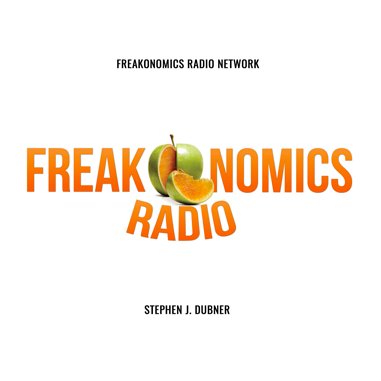- Arvind's Newsletter
- Posts
- Arvind's Newsletter
Arvind's Newsletter
Issue No #858
1.For India tech start-ups, IPO success hinges on foreign investors, reports Nikkei Asia
Foreign investors have the potential to make or break upcoming tech IPOs in India as domestic funds remain cautious about backing loss-making young ventures.
In the first half of the year, foreign portfolio investors almost tripled their holdings in three start-ups and now hold 33.3 per cent of food delivery service Zomato, 22.7 per cent of logistics company Delhivery and 16.8 per cent of financial services provider Paytm. In addition, their share of insurance start-up Policybazaar doubled to nearly 30 per cent. For lifestyle company Nykaa, it’s up one-and-a-half times to 10 per cent.
In comparison, domestic institutions in June owned 9.9 per cent of Zomato, 14.6 per cent of Delhivery, 3.5 per cent of Paytm, 15.4 per cent of Policybazaar and 11.6 per cent of Nykaa.
Analysts say this divergence underscores foreign investors’ familiarity with highly valued yet loss-making public companies, particularly in the US, and domestic investors’ reservations about such ventures.
Some richly valued companies such as babycare retailer FirstCry, hospitality start-up Oyo, eyewear retailer Lenskart, mobility company Ola and food delivery firm Swiggy have revived plans to go public. Financial services provider Navi and consumer goods brand Mamaearth have already received regulators’ approval to go public.
2.India’s federal direct tax collections up 21.8% at ₹9.57 lakh crore so far in FY24
India's direct tax collections rose 21.82 per cent year-on-year (YoY) at ₹9.57 lakh crore in the current fiscal (2023-24) till October 9, 2023, according to the Central Board of Direct Taxes (CBDT). The direct tax collections - net of refunds, is 52.50 per cent of the total budget estimates of direct taxes for FY24.
3.The scale and scope of Hamas’s surprise attack on Israel prompted a reassessment of the group’s capabilities. Gazans — who have been living under an Israeli blockade since 2007 — voiced support following the assault, despite the major response from Israel’s armed forces, Al-Monitor noted. Analysts, meanwhile, pointed to capabilities exhibited by the group such as its massive use of rockets —including some armed projectiles, according to SpyTalk — as well as the sophisticated, coordinated nature of the weekend operation: “You have seen an evolution of Hamas into a kind of terrorist organization that really no one could have foreseen … and that really is something that is profoundly alarming,” Bruce Hoffman, a counterterrorism expert at the Council on Foreign Relations, said on the War on the Rocks podcast.
Clearly Israel was prepared for a different war.
Over the past two decades, Israel’s military has focused on advanced air, defense and intelligence systems, believing that its main security threats were unconventional threats from rockets and insurgent attacks. On Saturday, Hamas used bulldozers and other rudimentary means to launch a relatively low-tech frontal assault that caught Israel’s Armed Forces of guard. WSJ’s Rory Jones and Dion Nissenbaum report that the Israeli military is now preparing for the possibility of a large-scale operation in Gaza, where it will have to rely more heavily on infantry and conventional warfare.
4.The Nobel Prize in economics went to Claudia Goldin, a Harvard economic historian, for work on the drivers of the gender pay gap.
Harvard University's Claudia Goldin won the Nobel Prize for Economic Sciences yesterday for her pioneering work in women's labor history. She is the third woman to receive the honor in the award's 54-year history and the first to do so individually.
The 77-year-old labor economist and economic historian has led the field for decades with positions at Princeton, the University of Pennsylvania, and Harvard—where she became the first woman in the economics department to receive tenure.
Her research has focused on the historical wage disparities between men and women. Previously, differences in education and occupation explained the gap, but Goldin found that in recent decades, pay differences emerged in the years after a woman had her first child. Today, women in the US earn roughly 80% of what men make. Listen to Stephen Dubner of Freakanomics old interview of Claudia Goldin on the drivers of gender pay gap.
And also Tyler Cowen’s more recent interview with Claudia
5.At what age do you hit the peak of your career?
Analysis by the Economist, based on evidence of 200 Nobel Laureates.
When john Goodenough won the Nobel prize in chemistry in 2019 at the age of 97, scientists breathed a sigh of relief. Many had worried that the committee would not get around to honouring his groundbreaking work on lithium-ion batteries from 1980.
Goodenough (who died this year) was the oldest winner of the world’s foremost research prize. Usually laureates are closer to 55 when they pick up the phone to hear the welcome Swedish accent. But it can take years between the publication of a laureate’s career-defining work and recognition from the Nobel committee. At what age are they at the height of their powers?
The answer has changed over time. Science laureates who received the prize between 1901 and 1950 were, on average, 39 years old when they published their winning paper, according to research published in 1957. But a study of more recent Nobel laureates published in 2019 by Rasmus Bjork of the Technical University of Denmark found that science and economics winners were, on average, 44 at the time of their prizewinning work.
Differences between disciplines have lessened. In the first half of the 20th century physicists and chemists were significantly younger when they made their big contributions (at 35 and 38 respectively) than were medical scientists (42). At the time this was attributed to the birth of modern physics at the turn of the century—spurred by new radiation discoveries, the theory of relativity and quantum mechanics—which set the scene for younger scientists to make their mark.
Now, however, the ages of peak achievement in each field are much closer, though physicists still tend to be slightly younger than average. (They make their main contributions at 42 on average, but the distribution skews younger). Physicists need fewer papers to make a big contribution, which may be why they tend to be relatively young when that happens. They usually win Nobels for one big discovery, whereas economists, for example, get them for theories they develop over several years, which pushes up their average age.
Regardless of discipline, future Nobel laureates in science are most productive from late youth to early middle age. Perhaps that is when they find themselves at the sweet intersection of fresh ideas and the means to pursue them. The median age of first-year phd students in the OECD, a club of mainly rich countries, is 29. Promising young researchers who want to start their own labs often get funding around five years after they graduate.
Surprisingly, writers, who depend less on doctoral degrees and grants for lab equipment, also do their best work as they enter middle age. Some Nobel laureates in literature, such as Bob Dylan, were chosen for their contributions over a lifetime. But in cases where the Nobel committee singled out for commendation individual works, the authors’ average age was 41.
Perhaps people destined to do prizewinning work become happier, and therefore more creative, as they enter their 40s. Society loves the idea of young talent, but it should celebrate middle-aged talent, too.







